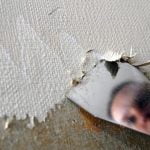Indoor air quality plays a crucial role in our overall health and well-being, yet it is often overlooked. In this article, we will discuss how to help improve air quality at home. Poor indoor air quality can lead to various health issues, including respiratory problems, allergies, and even more serious conditions. Understanding the importance of indoor air quality is the first step towards creating a healthier environment for you and your family.
Common indoor air pollutants such as dust, mold, pet dander, and volatile organic compounds (VOCs) can have detrimental effects on our health. These pollutants can trigger asthma attacks, worsen allergies, and even contribute to long-term respiratory issues. By knowing the sources of indoor air pollution and their potential health effects, we can take proactive steps to reduce exposure and improve the quality of the air we breathe in our homes.
One of the key ways to reduce indoor air pollution is through proper ventilation. Good ventilation helps to circulate fresh outdoor air into your home, diluting pollutants and improving overall air quality.
Opening windows regularly, using exhaust fans in kitchens and bathrooms, and investing in an air purifier with a ventilation feature are effective ways to ensure proper airflow and reduce the concentration of indoor pollutants. By implementing these simple tips, you can make a significant difference in the quality of the air inside your home.
Common Indoor Air Pollutants and Their Health Effects
Indoor air pollutants can have a significant impact on our health and well-being. Common indoor air pollutants include volatile organic compounds (VOCs) from household cleaners, paints, and personal care products, as well as allergens like dust mites, pet dander, and mold spores. These pollutants can trigger a range of health issues, from allergies and asthma to more serious respiratory problems.
One of the best ways to help improve air quality at home is by ensuring proper ventilation. Opening windows and using exhaust fans in kitchens and bathrooms can help remove indoor air pollutants and bring in fresh outdoor air. Additionally, investing in an air purifier with a HEPA filter can help capture airborne particles and improve overall indoor air quality. Regularly changing the filters in your HVAC system can also prevent the buildup of dust and other contaminants.
In addition to proper ventilation, regular cleaning and maintenance are essential for reducing indoor air pollution. Dusting surfaces, vacuuming carpets with a HEPA filter-equipped vacuum cleaner, and washing bedding regularly can help eliminate dust mites and allergens. Keeping humidity levels between 30-50% can also prevent mold growth. By taking these simple steps, you can create a healthier environment for you and your family to breathe easier at home.
| Common Indoor Air Pollutants | Health Effects |
|---|---|
| Volatile Organic Compounds (VOCs) | Allergies, asthma, respiratory issues |
| Dust Mites | Allergies, skin irritation |
| Mold Spores | Respiratory infections, asthma exacerbation |
Tips for Reducing Indoor Air Pollution
Proper ventilation in your home is essential for maintaining good indoor air quality. Without adequate ventilation, indoor air pollutants can become trapped and build up, leading to a variety of health issues. In this section, we will explore some tips on how to improve air quality at home by focusing on proper ventilation techniques.
Open Windows and Doors
One of the simplest ways to improve ventilation in your home is by opening windows and doors whenever possible. This allows fresh air to circulate and helps to flush out indoor pollutants. Try to open windows on opposite sides of your home to create cross-ventilation for maximum effectiveness.
Use Exhaust Fans
Exhaust fans in kitchens and bathrooms are designed to remove odors, moisture, and pollutants from the air. Make sure to use these fans during and after cooking or showering to prevent indoor air pollution from lingering. Additionally, consider installing exhaust fans in other areas of your home where pollutants may be present, such as the garage or laundry room.
Air Out New Furniture and Products
New furniture, carpets, or household products can release volatile organic compounds (VOCs) into the air, contributing to indoor air pollution. To help improve air quality at home, be sure to air out new items in a well-ventilated area before bringing them inside. Consider placing them outside or in a garage for a few days before bringing them into your living space.
By implementing these proper ventilation techniques into your daily routine, you can effectively reduce indoor air pollution and create a healthier environment for you and your family. Remember that good ventilation is key to improving indoor air quality and overall well-being in your home.
Tips for Reducing Indoor Air Pollution
Indoor air pollution can often be attributed to the buildup of dust, allergens, and other contaminants within our homes. Regular cleaning and maintenance practices play a crucial role in reducing these pollutants and improving indoor air quality. By implementing simple yet effective strategies, you can create a healthier environment for you and your family.
Establish a Cleaning Routine
One of the most important steps in reducing indoor air pollution is to establish a consistent cleaning routine. Regular vacuuming, dusting, and mopping can help remove dust, pet dander, mold spores, and other pollutants that accumulate in your home. Pay special attention to high-traffic areas, carpets, upholstery, and curtains where these particles tend to settle.
Proper Ventilation
In addition to cleaning surfaces regularly, proper ventilation is key to improving indoor air quality. Opening windows and utilizing exhaust fans in bathrooms and kitchens can help reduce moisture levels and prevent the growth of mold and mildew. It’s also essential to change air filters in heating and cooling systems as recommended by manufacturers to ensure optimal airflow and filtration of airborne particles.
Eliminate Clutter
Clutter not only makes it difficult to clean effectively but also creates hiding spots for dust mites, pests, and other potential sources of indoor air pollution. By decluttering your living spaces regularly, you can minimize the accumulation of unnecessary items that collect dust and contribute to poor indoor air quality. Consider donating or discarding items you no longer need to maintain a cleaner environment.
By incorporating these tips for reducing indoor air pollution through regular cleaning and maintenance into your household routine, you can significantly improve the quality of the air you breathe at home. Making a conscious effort to keep your living spaces clean and free from contaminants will not only promote better respiratory health but also contribute to an overall healthier environment for you and your loved ones.
How to Choose the Right Air Purifier for Your Home
Indoor air quality is essential for maintaining a healthy home environment. One effective way to help improve air quality at home is by using an air purifier. Air purifiers are designed to remove pollutants, allergens, and other harmful particles from the air, creating a cleaner and healthier indoor space. When choosing an air purifier for your home, consider the following factors:
- Identify your specific needs: Before purchasing an air purifier, assess your indoor air quality concerns. Do you have allergies or asthma? Are you looking to reduce pet dander or eliminate odors? Understanding your needs will help you choose the right type of air purifier.
- Consider the size of the area: It’s important to select an air purifier that is suitable for the size of the room where it will be used. Different models have varying coverage capacities, so make sure to check the manufacturer’s recommendations.
- Look for HEPA filters: High-Efficiency Particulate Air (HEPA) filters are highly effective at capturing small particles like dust mites, pollen, and mold spores. Choose an air purifier with a HEPA filter to ensure thorough filtration of indoor pollutants.
Investing in a quality air purifier can make a significant difference in your home’s air quality and overall well-being. By selecting an appropriate model based on your individual needs and considering important factors like coverage area and filter types, you can enjoy cleaner and fresher indoor air. Remember that regular maintenance and filter replacement are crucial for optimal performance, so be sure to follow the manufacturer’s instructions for care and upkeep of your chosen air purifier.
Overall, choosing the right air purifier for your home is a proactive step towards improving indoor air quality and creating a healthier living environment for you and your family. With proper research and consideration of key factors, you can find an effective solution to combat indoor pollutants and breathe easier at home. So take the necessary steps today to invest in an air purifier that suits your needs and start enjoying cleaner, fresher air in your living space.
The Benefits of Using Indoor Plants to Improve Air Quality
Indoor plants not only add a touch of greenery to your living space but also play a crucial role in improving the air quality within your home. Plants have the ability to absorb harmful pollutants and release oxygen through photosynthesis, making them natural air purifiers. Here are some ways in which incorporating indoor plants can help improve the air quality in your home:
- They help remove toxins: Indoor plants such as spider plants, peace lilies, and snake plants are known for their ability to absorb toxins like formaldehyde, benzene, and trichloroethylene from the air. These harmful chemicals are commonly found in household items such as cleaning products, paint, and furniture.
- They increase humidity levels: Indoor plants release water vapor through a process called transpiration, which increases the humidity levels in a room. This can be beneficial, especially during dry winter months when indoor air tends to be dry due to heating systems. Adequate humidity levels can help prevent respiratory issues and dry skin.
- They boost mental well-being: Apart from their air-purifying properties, indoor plants have been linked to reducing stress, anxiety, and improving overall well-being. The presence of greenery indoors has a calming effect and can contribute to creating a relaxing environment that promotes better health.
In addition to their aesthetic appeal and air-purifying abilities, indoor plants are relatively low maintenance and can thrive in various lighting conditions. Adding a few plants to different rooms in your home can significantly enhance the overall air quality while bringing nature indoors. Consider placing them near windows for adequate sunlight exposure or grouping them together for a mini indoor garden that not only looks beautiful but also helps promote better indoor air quality.
- Water your indoor plants regularly
- Dust the leaves occasionally to ensure optimal performance
- Choose plant species that are safe for pets if you have furry companions at home
Creating a Healthy Indoor Environment
Indoor air quality is essential for maintaining a healthy living environment. One of the key ways to improve air quality at home is by choosing non-toxic household products. Many common household cleaners, disinfectants, and air fresheners contain volatile organic compounds (VOCs) and other harmful chemicals that can contribute to indoor air pollution. These pollutants can lead to a variety of health issues, including respiratory problems, headaches, and allergies.
To create a healthier indoor environment, it is important to opt for non-toxic alternatives to traditional household products. Look for cleaning supplies that are labeled as “green” or “environmentally friendly,” as these products are formulated without harsh chemicals that can negatively impact indoor air quality. Additionally, consider using natural ingredients like vinegar, baking soda, and essential oils to create your own homemade cleaners that are safe and effective.
In addition to choosing non-toxic household products, it is also important to properly store any potentially harmful substances in your home. Keep cleaners, pesticides, and other chemicals in a well-ventilated area away from living spaces to prevent them from releasing harmful fumes into the air. By being mindful of the products you use and how you store them, you can help reduce indoor air pollution and create a healthier living environment for you and your family.
| Non-Toxic Household Products | Benefits |
|---|---|
| Natural cleaning supplies | Formulated without harsh chemicals |
| Vinegar, baking soda, essential oils | Safe and effective alternatives for cleaning |
| “Green” or environmentally friendly products | Reduce exposure to VOCs and other harmful chemicals |
The Role of Humidity Control in Maintaining Good Indoor Air Quality
Maintaining the proper level of humidity in your home is crucial for ensuring good indoor air quality. High humidity levels can promote the growth of mold and dust mites, which can exacerbate respiratory issues and allergies. On the other hand, low humidity levels can lead to dry skin, irritated eyes, and respiratory problems. By controlling humidity levels in your home, you can create a more comfortable and healthier living environment for you and your family.
One way to control humidity levels in your home is by using humidifiers or dehumidifiers. Humidifiers add moisture to the air when it’s too dry, while dehumidifiers remove excess moisture when it’s too high. It’s important to monitor humidity levels regularly and adjust accordingly to maintain an optimal range, typically between 30-50%. Investing in a hygrometer can help you keep track of indoor humidity levels and make adjustments as needed.
In addition to using humidifiers or dehumidifiers, proper ventilation is also key in controlling indoor humidity. Properly ventilating your home allows excess moisture to escape and fresh air to circulate throughout the space.
Opening windows, using exhaust fans in kitchens and bathrooms, and utilizing air purifiers with built-in ventilation systems are all effective ways to improve indoor air quality by managing humidity levels. By taking these steps to achieve balanced humidity levels at home, you can help reduce the risk of mold growth, respiratory issues, and other health concerns associated with poor indoor air quality.
Conclusion
In conclusion, improving air quality at home is essential for our overall health and well-being. By understanding the importance of indoor air quality and being aware of common indoor air pollutants, we can take proactive steps to reduce their presence in our living spaces. Proper ventilation, regular cleaning and maintenance, as well as choosing the right air purifier, are effective ways to minimize indoor air pollution.
Additionally, incorporating indoor plants into our homes can help improve air quality naturally by filtering out toxins and releasing oxygen. Choosing non-toxic household products also plays a significant role in creating a healthy indoor environment. By being mindful of the products we use, we can further reduce the harmful chemicals released into the air.
Moreover, maintaining proper humidity levels in our homes is crucial for good indoor air quality. By controlling humidity, we can prevent mold growth and reduce the presence of allergens in the air. Overall, taking these steps to improve air quality at home not only benefits our health but also enhances our overall well-being. By adopting these practices, we can create a healthier and more comfortable living environment for ourselves and our loved ones.
Frequently Asked Questions
What Is the Fastest Way to Improve Air Quality in a Home?
The fastest way to improve air quality in a home is by ensuring proper ventilation. Opening windows, using exhaust fans, and installing an air purifier can help reduce indoor pollutants and circulate fresh air throughout the house.
What Are 5 Ways to Improve Air Quality?
There are five key ways to improve air quality in a home. First, regularly clean and vacuum to remove dust and allergens. Second, minimize indoor pollutants by using non-toxic cleaning products.
Third, maintain optimal humidity levels to prevent mold growth. Fourth, avoid smoking indoors to prevent tobacco smoke from contaminating the air. Lastly, consider adding houseplants known for their air-purifying properties.
How Can We Improve the Household Air Pollution?
Household air pollution can be improved by taking several steps. Using natural ventilation whenever possible can help reduce indoor pollutant levels. Additionally, keeping a clean home by regularly dusting and vacuuming can minimize allergens in the air.
Installing carbon monoxide detectors can ensure harmful gases are not present in the household air. Finally, avoiding burning wood or other materials indoors can help maintain cleaner indoor air quality overall.

I’m thrilled to have you here as a part of the Remodeling Top community. This is where my journey as an architect and remodeling enthusiast intersects with your passion for transforming houses into dream homes.





